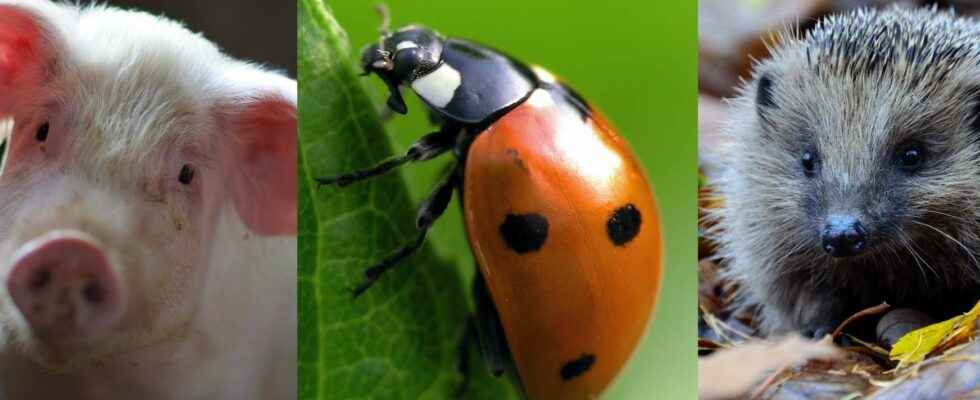Don’t be fooled by their cute and innocent look: these seemingly peaceful animals are in fact killers who don’t hesitate to devour their own kind. A barbaric behavior which, most of the time, has nothing to do with a food shortage.
You will also be interested
[EN VIDÉO] Experts of the past: were Neolithic men cannibals? Determining the function of an archaeological site can lead to unexpected conclusions. A few kilometers from Calais, archaeologists from Inrap (National Institute for Preventive Archaeological Research) have discovered numerous remains of shells, animals and even humans. Does this mean that Neolithic men indulged in cannibalism? The team tries to understand the source of these finds in this episode of Experts from the past and it is not at the end of its surprises.
We know well the examples of Black Widow or the praying mantis, which devour the male as soon as the mating is over. But, in the animal kingdom, the cannibalism is far from an exception. Even unsuspected animals indulge in this practice a priori against nature. Whether it is to eliminate competition, to feed themselves or out of survival instinct, their menu is often enriched with their own congeners.
The Hedgehog
Omnivorous, the hedgehog feeds mainly oninsects (centipedeflies, locusts…), but also fruits, mushrooms, and occasionally slugs and snails. However, it happens that the mother hedgehog devours part or all of her litter after thechildbirth ; a behavior called puerperal cannibalism which is thought to be due to a survival instinct when the mother is frightened or feels she is being watched. The risk is all the greater in hedgehogs bred in captivity because they are very fearful animals. For this reason, the veterinarians advise keeping the mother isolated from prying eyes and other hedgehogs after birth.
The pig
Cannibalism is a well-known problem in pig farmsespecially when the temperatures are too high and the pigs are too tight or the ventilation is deficient. Known as “tail biting”, this behavior results in sometimes deep bites that can degenerate into abscess. ” Appetite problems related to a transit feed too short or the presence of mycotoxins can also trigger cannibalism, in the same way as too severe rationing or too late an evening meal, knowing that there is a peak of excitation in pigs at the end of the afternoon “, indicates the veterinarian François Jégou on the site Animal-health.
Seal
What’s cuter than a baby seal with his white fur? It is however without pity that the males devour the young seals in order to satisfy themselves. Abbo van Neer, from the University of Veterinary Medicine in Hanover (Germany), witnessed a particularly macabre scene: a gray seal 5-year-old lunges at a young seal, before grabbing it by the throat, then pushing it into the water. ” After 10 minutes, the color water turns red and the victim freezes. For the next 90 minutes, the male feeds by tearing off the thick skin of its prey in order to gain access to the blubber rich in energy“, tells the scientist to the site National Geographic. We do not know if this cannibalism is linked to hunger or if it is the result of slightly “disturbed” animals.
the hamster
Like the hedgehog, the female hamster is likely to eat her newborns. Even though baby hamsters are very cute, so you should definitely leave the mother alone after giving birth, keeping her away from any source of stress (noise, light vivid, insistent gaze, movement of the cage or accessories…). Likewise, refrain from handling baby hamsters as you may upset the mother with a new scent. Puerperal cannibalism is also found in wild hamsters, victims of malnutrition: for example, it has been shown that a deficiency in vitamins at the house of the large hamsters of Alsace leads to a detachment of the mother from her young, which ends up eating them still alive. A phenomenon aggravated by monoculture of corn.
The Pelican
The majestic pelican feeds mostly on Piscessmall reptiles and amphibians. The Spectacled Pelican, on the other hand, seems to have a serious penchant for the most unusual food. Not happy with attack other birds (gulls, ibises, teals…) that he drowns by keeping them in the water, he does not hesitate from time to time to add to his menu young pelicans picked from unsupervised nests. Cases of cannibalism were thus reported in 2008 by Australian researchers from the University of Sydney, who noticed individuals devouring eggs, nestlings, and even young adults of up to 1.5 kg. It even seems that small dogs have done the trick to satisfy their unlimited appetite.
The ladybug
The ladybug is renowned for its appetite for aphids, insect pests that parasitize plants. But the larvae to several species ladybugs do not hesitate to indulge in cannibalism by devouring the brothers and sisters who have not yet hatched. This satiating menu leads to a “direct metabolic gain” allowing the larva to grow faster and increase its chances of survival, according to Cambridge University researchers. Cannibal larvae thus have an 81% chance of reaching adulthood, compared to 46% of non-cannibalistic larvae. Cannibalism is also a useful way to eliminate competition.
The squirrel
With his cute muzzle and his air innocent, we do not suspect that thesquirrel roux hides a cannibal and a child killer. A study published in 2018 in The Scientific Naturalist highlighted cases of baby squirrels being killed and eaten by males in Yukon, Canada. Not that they confused the babies with hazelnuts, this behavior would be linked to a kind of jealousy. When food is plentiful, females have up to two litters per year and mate with several males. The latter cannot know which ones belong to them, they prefer to kill the entire litter so that the female is again ready to procreate. Squirrels also enjoy baby rabbits, baby birds and bird eggs.
Interested in what you just read?
